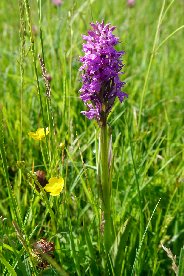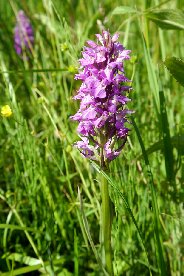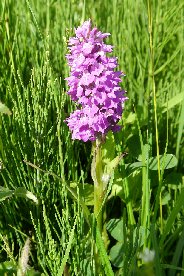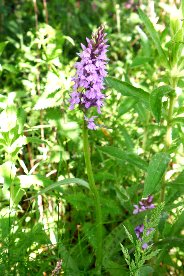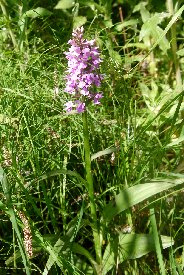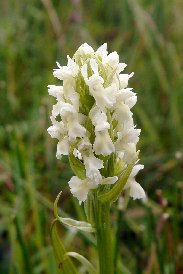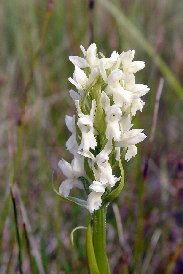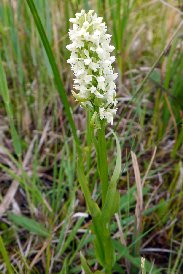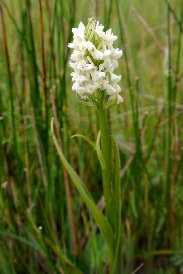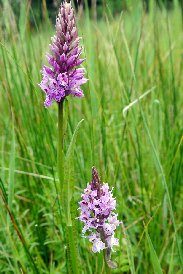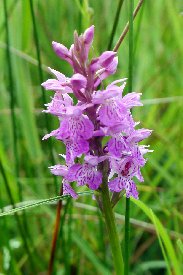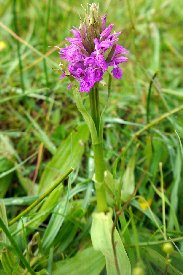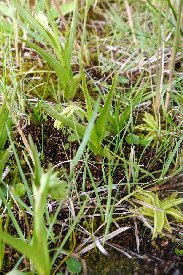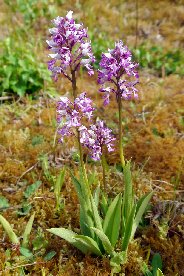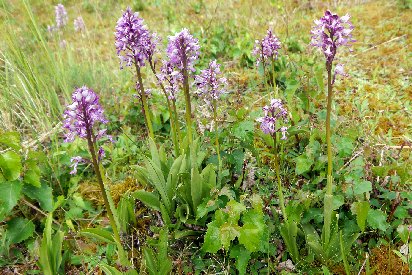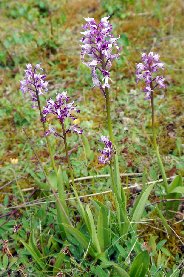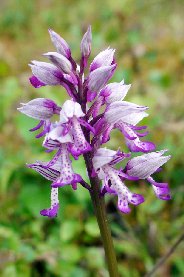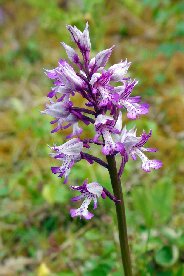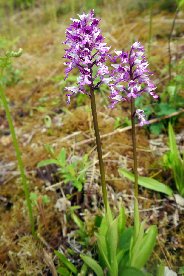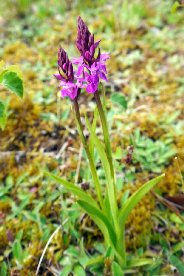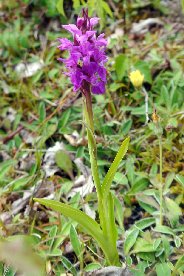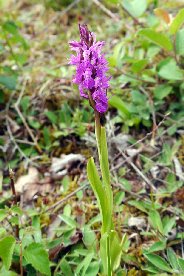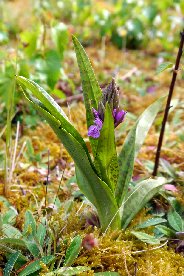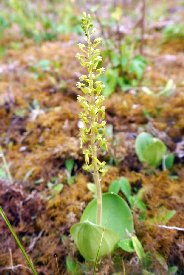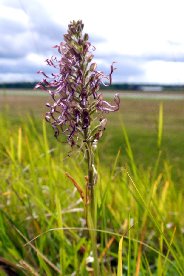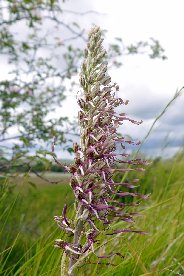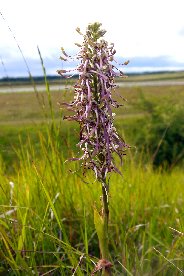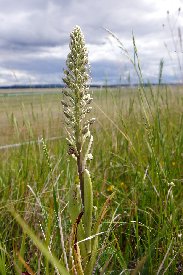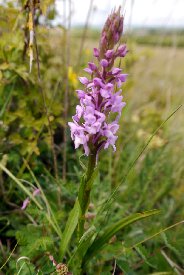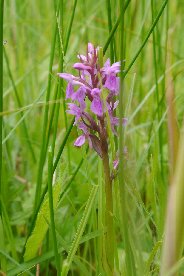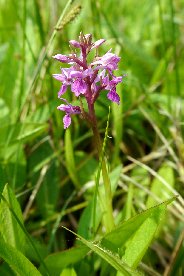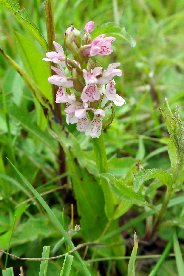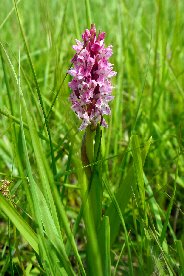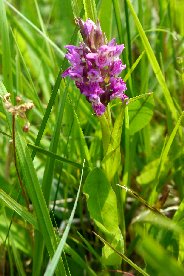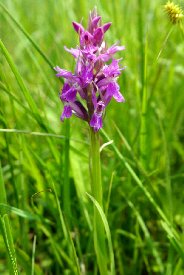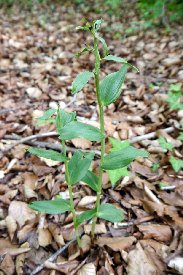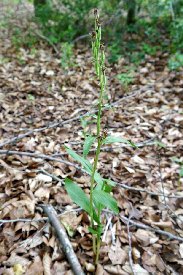|
|
|||||||||||
|
|
|||||||||||
 |
|
Neston Old Quay, 02 June 2025 (SJ 28861 76946) Another place, relatively local, that I have not returned to in five long years. This time nothing has changed! Some nice Southern Marsh Orchids part hidden by buttercups and reeds. However I do find a small group of what could be Dactylorhiza x grandis. They are a bit taller than the rest, one has spotty leaves, and they do seem to have a lip hinting at Common Spotted ancestry. I have not seen that parent growing here, but there are field and hedges all around where some could be lurking.
I am not publishing the exact location I visited for obvious reasons, but you will be able to narrow it doen to one of the fens in the county. This was the main reason for us to travel across to East Anglia - to see Early Marsh Orchids of the ochroleuca type. Many thanks to those who privately pointed me in the right direction saving much time and effort. These only grow in a few (or less) fens, but too often var albiflora varities of incarnata are mistaken for them, despite being in the wrong habitat and wrong geographical area. I have made that error before, only to realise once I got home. True ochroleuca is a rather robust plant with flowers of palest ivory rather than pure white. There are also some Dacts here, but what are they exactly? The problem is that within a handful of plants there is quite a bit of variation. I look at some and think A) Southern Marsh Orchid, and look at others and think B) Narrow-leaved Marsh Orchid - or is that the C) schoenophila sub-species of the former. Some have lips that are distinctly 3-lobed and widest near the tip, and have lines rather than dashed or dotted markings, suggestive of the latter two. Others have more typical SMO lips, while all have spikes more like SMO. If there are B) or C), and the habitat is just right for either, here how do I know which they are. Remember that genetic studies on the apparent NLMOs of southern England (including East Anglia) showed then to actually be SMO of a new sub-species. What I an say is that these look as variable as the NLMO I have seen in Anglesey. It is not often one can visit sites that are home to two British orchids that only grow in less than a handful of places in one day. Again I am not publicly divulging the exact woodland where these Military Orchids grow. At first sight looking down on them they looked magnificent. Once inside their enclosure they looked even better. At their Chilterns site they are necessarily individually caged to protect from grazing, but that is at the cost of the aesthetics of seeing them as they should be seen. This site is even better, with groups of them even. And there is more here. There are Common Twayblades, but these look more delicate than those that I am used to. The Alyn Waters population is definitely more butch with large almost leathery leaves. There are some Southern Marsh Orchids; unusual I am told for them to be growing on chalk. They are quite deeply coloured, yet have the classic SMO lip shape and patterning. There is one however with ring spotted leaves and bolder lined markings on the lip. Could this be a Leopard Marsh Orchid, Dactylorhiza preatermissa var junialis? Devilís Dyke 7th June 2025 (TL 60375 62779) We do this visit without realising two things. Firstly, having parked in the official car park on the B1102. it would be a two mile trek along the top of the dyke to get to the orchids, and secondly, that they actually grow within Newmarket Racecourse. You have to cross the course to get to them. Luckily there is no race meeting we we arrive. Thankfully there are about 20 Lizard Orchids here, easily visible in the long grass. There is however quite a breeze coming in from the west making photography rather tricky. And of course this is the side where they are in flower. On the east side where presumably less sun they are still in bud. It is worth the walk to see these weird and wonderful orchids in decent numbers. And it is great to see such an impressive early Saxon earthwork, Our East Anglian stay continued, but visits to Lakenhurst Fen and Redgrave and Lopham Fens surprisingly yield no orchids, though we only walk some of the latter. There are none around Grimeís Graves nor Thetford Forest Area. At Ickfield House there are a few Common Spotted Orchids in an unmown patch at the from of the mansion, but I suspect the wild flower seed mix used by the National Trust contains some of these seeds; seen this so many times at NT properties. Wicken Fen 9th June 2025 (TL 56358 70528) This site promises more than it delivers in terms of orchids. Firstly we come across some Southern Marsh Orchids; not many and none very handsome. It is only later that I realise that this is a fen, and that this is prime for ssp schoenophila. Was there any Black Rush growing in that area? Could be, but I cannot remember. This orchid entity was originally put down as a Southern English Narrow-leaved Marsh Orchid growing in alkaline fen environments from East Anglia to Hampshire and beyond. Genetic analysis has redefined it as a SMO sub-species, but that does not alter its NLMO characteristics. I should have taken more photos. What do you think? Are they schoenophila? Then we come across some typical Early Marsh Orchids; nice pink forms of incarnata. Again not many. Typically, from the birding tower I can see more and larger specimens across the other side of a wide and probably deep drainage ditch. Then there are some purple flowered forms of the same sub-species. These cannot be the pulchella sub-species; though those are purple flowered, they only grow in acid environments. I have read that despite the Latin name, purple is the dominant colour of this sub-species around the Baltic area. It is just that in the UK the pink form has been selectively chosen as the dominant form by the visiting habits of pollinating insects. Beechwoods LNR 9th June 2025 (TL 48508 54800) Another disappointment. Harrop lists this site and mentions that a census put 1800 White Helleborines growing here. For 2025 edit that to 1799 grazed stems and 1 survivor with seed pods. It would have been a grand display too! And that concludes our East Anglia adventure. A bit of a curate`s egg.
|
|
|
||||||||||||||
